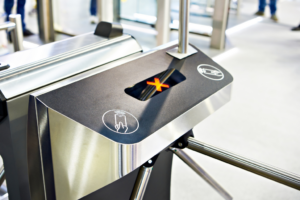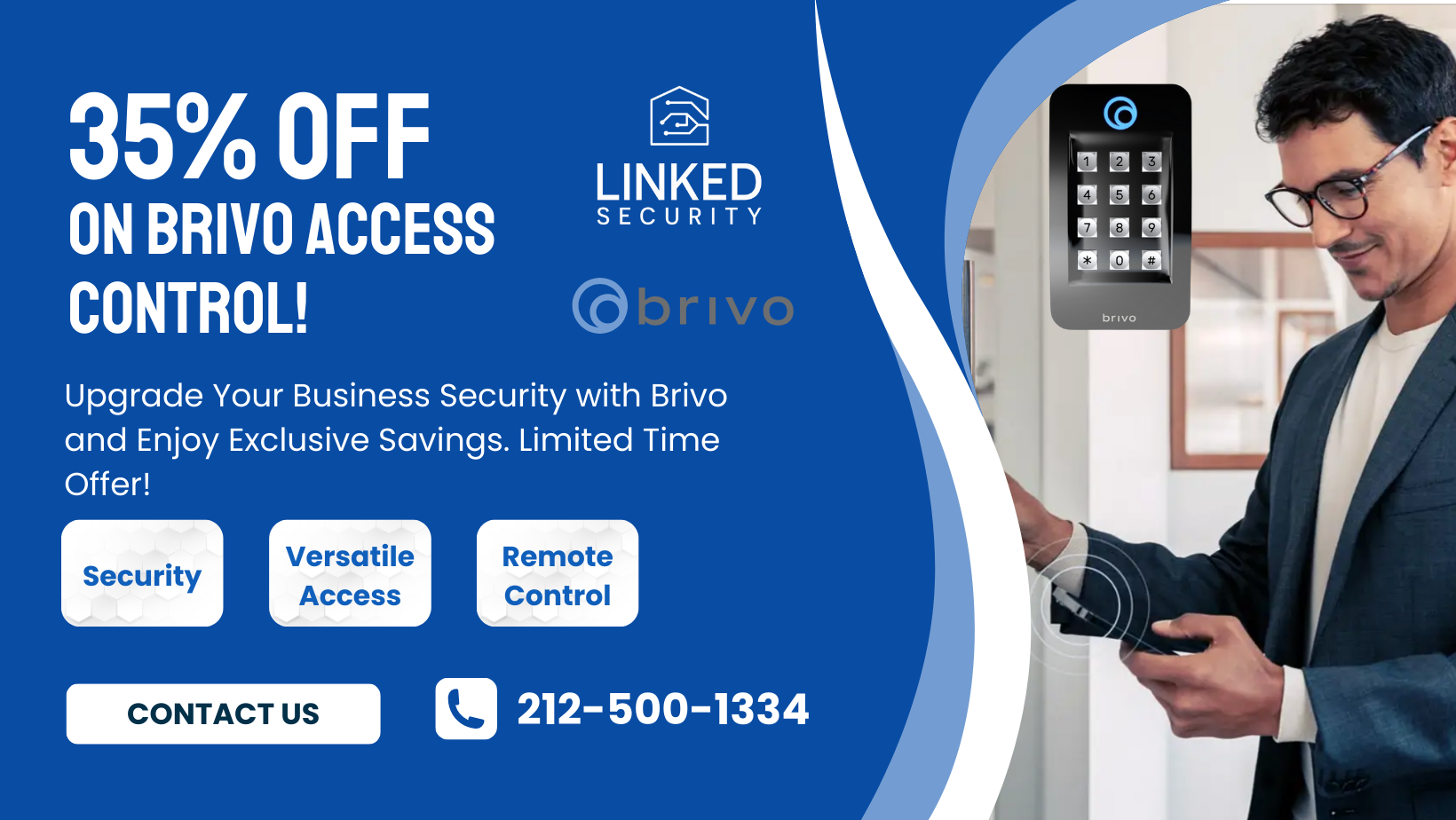Overview of Commercial Access Control Systems

Commercial access control systems have revolutionized the way businesses secure their premises. From traditional keys to advanced biometric solutions and RFID technology, these systems offer enhanced security and convenience in door access and secure access control. In today’s fast-paced world, businesses rely on sophisticated technologies such as security systems to protect assets and data effectively. With a rich historical backdrop of evolving security needs, technology commercial access control systems, including RFID and software, have become indispensable tools for modern enterprises. Stay ahead of the curve and explore the benefits of implementing cutting-edge access control technology, RFID, software, and door solutions for your business.
Components of Access Systems
Control Panels
Install control panels in commercial access control systems to store user data and send commands to various components. These panels serve as the central hub for managing access rights and permissions, control, life safety, system type, and Everon.
Utilize these panels to configure access levels for different users, monitor system activity, and generate reports for security purposes. They play a crucial role in ensuring the overall functionality and security of the access control system.
Door Readers
Incorporate door readers into the system at access points to scan credentials such as key cards, PIN codes, or biometric information. These readers validate user identities before granting or denying access to specific areas within a facility.
Door readers, also known as access control, come in various forms, including proximity card readers, keypad entry systems, and fingerprint scanners. By accurately verifying user credentials and utilizing an access control system, they enhance the security of commercial spaces, restrict unauthorized entry effectively.
Lock Hardware
Implement lock hardware within access control systems to physically restrict or allow access through doors, gates, or elevators. This hardware includes electric strikes, magnetic locks, and motorized locks that can be controlled remotely via the system using access methods.
Types of Access Technologies
Discretionary Access
Discretionary access control allows the owner to determine who has access based on their identity and permissions. It operates on a need-to-know basis, controlling access to only what is necessary for an individual to perform their job.
Rule-Based Systems
In rule-based access control, access is granted or denied based on predefined rules set by the system administrator. These rules control the system type and dictate the conditions under which access is permitted, enhancing security by enforcing specific criteria.
Role-Based Access
Role-based access control assigns permissions based on job roles within an organization. This method simplifies administration by grouping users with similar job functions and granting them consistent levels of access to the system for control.
Wired vs. IP-Based Systems
Wired systems use physical connections like cables to communicate between devices, offering reliability but limited scalability. On the other hand, IP-based systems rely on network connections, providing flexibility and remote accessibility.
On-Premise Systems
Organizations opt for on-premise systems when they require complete control over data hosting and security protocols. Hosting locally ensures greater oversight and compliance with regulatory requirements.
Wired vs IP-based Systems
Limitations:
Wired systems face challenges in supporting multiple access points, requiring extensive cabling for each point. This limitation can increase installation complexity and costs significantly.
Scalability:
IP-based systems offer enhanced scalability by leveraging existing network infrastructure, eliminating the need for additional control panels. This flexibility allows for easier expansion and customization as businesses grow.
Security Features:
Both wired and IP-based systems come with robust security features to protect access control data. While wired systems may have dedicated security measures within the physical wiring, IP-based systems provide remote access capabilities for real-time monitoring, management, and control.
Cloud-based Access Innovations
Cost Efficiency
Cloud-based access control systems offer cost-effective solutions for businesses by eliminating the need for extensive hardware installations. This reduces upfront costs significantly.
These systems provide flexibility in scaling operations, allowing businesses to add or remove access points easily without incurring high expenses.
Security Concerns
Despite their advantages, cloud-based systems are vulnerable to hacking due to their online nature and access control. Weak passwords and inadequate encryption can expose businesses to security breaches.
Businesses must prioritize cybersecurity measures such as multi-factor authentication, access control systems, and regular software updates to mitigate these risks effectively.
Remote Management Benefits
One of the key benefits of cloud-based access control systems is the ability to manage access remotely. This feature enables administrators to monitor, control, and adjust access permissions from anywhere using mobile devices.
Biometric and Mobile Credentials
Biometric
Biometric credentials offer heightened security by using unique biological traits like fingerprints or iris scans in an access control system. They provide an extra layer of control and system protection against unauthorized access to sensitive areas.
Mobile Credentials
Mobile credentials are convenient for users, allowing them to access secured areas through a mobile app to control the system. Users can easily manage their access rights and permissions on their smartphones, enhancing user experience by having control over the system.
Integration
The integration of biometric and mobile credentials with access control systems enhances overall security measures. By combining these technologies, organizations can ensure secure and seamless access for authorized personnel.
Implementing biometric credentials in an access control system significantly reduces the risk of unauthorized entry, as they are difficult to forge. Mobile credentials, on the other hand, offer flexibility and ease of use for users on the go in an access control system.
- Enhanced security with biometric credentials
- Convenient access management through mobile credentials
Selecting the Right System
Security Requirements
When choosing a commercial access control system, consider security requirements as a top priority. Different systems offer varying levels of security features, including access control, to meet specific needs.
Evaluate the scalability of management systems to ensure they can adapt to your facility’s growth. Scalability is crucial for accommodating future expansions and changes in your organization.
Reputable Providers
Choose a provider known for reliability and ease of use in their security solutions. Opt for companies with a track record of providing high-quality products and excellent customer support.
- Evaluate security features
- Consider scalability options
- Check provider’s reputation
Benefits of Access Control
Enhanced Security
Access control systems provide secure access control by allowing only authorized individuals to enter specific areas. By implementing access rights and restrictions, these systems prevent unauthorized entry, enhancing overall security.
Improved Efficiency Real-time monitoring offered by access control solutions ensures that businesses can track and manage the movement of individuals within their premises efficiently. This feature not only enhances security but also streamlines operations, saving time and resources.
Safer Premises
Integrated security solutions in commercial access control systems go beyond traditional access control methods. These comprehensive security measures include features like audit trails, which help in monitoring and tracking every access attempt. Such detailed monitoring ensures a safer environment for employees and visitors.
- Pros:
- Enhanced security measures.
- Real-time monitoring capabilities.
- Comprehensive safety features.
- Cons:
- Initial setup costs can be high.
- Maintenance may require technical expertise.
Closing Thoughts
You now grasp the key elements of commercial access control systems, from their components to the benefits they offer. Understanding the various technologies and considerations involved empowers you to make informed decisions when selecting the right system for your needs. By leveraging biometric features, mobile credentials, or cloud-based innovations, you can enhance security and streamline access management in your premises.
Take charge of your security and efficiency by implementing a robust access control system tailored to your requirements. Stay informed about the latest advancements in access technologies to continuously improve your security measures. Your proactive approach will not only safeguard your assets but also provide peace of mind knowing that you have a reliable system in place.
Frequently Asked Questions
What are the key components of access control systems?
Access control systems consist of electronic locks, credentials (cards, biometrics), readers, and a central management system. These components work together to regulate access control to buildings or areas based on predefined permissions.
What are the benefits of using commercial access control systems for integrated security and comprehensive security?
Commercial access control systems enhance security by restricting unauthorized entry, providing detailed access logs for monitoring, eliminating the need for physical keys, and offering flexibility in managing access rights remotely.
How do wired and IP-based access control systems differ?
Wired systems use physical cables for communication, while IP-based systems utilize network connections. IP-based solutions offer easier scalability, remote management capabilities, and integration with other security systems compared to traditional wired setups.
What are some popular types of access technologies, such as RFID, used in commercial settings for security systems?
Common access technologies include card readers, keypads, biometric scanners (fingerprint, facial recognition), mobile credentials (smartphones), and proximity cards. Each technology offers varying levels of security, access control, and convenience for users.
How can businesses select the right commercial access control system with rfid for facilities and life safety solutions?
Businesses should assess their security needs, consider scalability options, evaluate integration capabilities with existing systems (CCTV), review user-friendly features like mobile compatibility, and ensure compliance with industry standards before choosing an access control solution.





